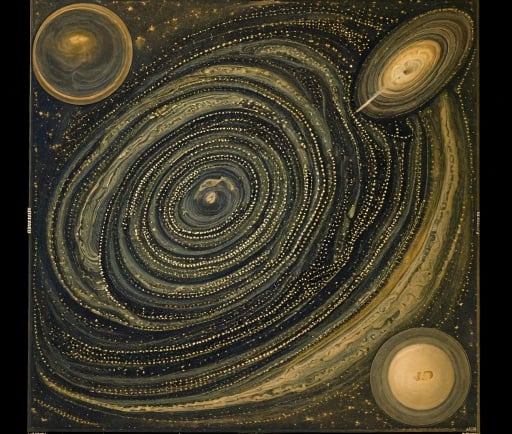The Universal Shapes and Their Deep Meanings in Hindu Tradition


The Significance of Shapes in Hindu Culture
In the vast realm of Hindu philosophy, shapes play a vital role in representing deeper truths about the universe and the cosmic order. From the intricate carvings in ancient temples to the constructive geometry of mandalas, universal shapes are imbued with profound meaning that connects devotees to the spiritual fabric of existence.
Common Universal Shapes and Their Representations
Various shapes are recurrent in Hindu tradition, and each carries its own significance. For instance, the circle is seen as a symbol of eternity, wholeness, and the cycle of life. It reflects the cyclical nature of time in Hindu cosmology, where creation and destruction occur continuously.
The triangle, another prevalent shape, represents fire as well as the divine feminine energy (Shakti) and is often associated with the goddess Durga. In contrast, the square symbolizes stability and the material world, translating the concept of dharma and duty in human life.
Mandalas: The Union of Shape and Spirituality
Perhaps one of the most profound representations of universal shapes in Hinduism is found in the mandala. These geometric configurations serve as spiritual symbols, acting as a visual aid for meditation and contemplation. The complexity of mandalas encapsulates the interconnectedness of all beings, offering a glimpse into the divine order.
Traditionally, mandalas incorporate various shapes, including circles, squares, and triangles, arranged in harmonious patterns. This intricate design not only enhances aesthetic appreciation but also helps cultivate a sense of inner peace and connection with the universe. Practically, mandalas are utilized during rituals and meditation practices to focus the mind and draw the practitioner closer to spiritual enlightenment.
The diversity of shapes utilized in mandalas also extends to the interpretation of the world around us. For adherents of Hinduism, understanding these shapes transcends the geometric; it encourages insight into the nature of reality itself. Each shape prompts reflection on the spiritual teachings outlined in ancient texts, further deepening the bond between the physical and metaphysical realms.
Conclusion: Embracing Deep Connections through Shapes
In conclusion, the universal shapes within Hindu tradition are more than mere artistic expressions; they are profound symbols that articulate the intricacies of life and spiritual truths. By embracing these shapes, individuals can make sense of the universe and their place within it. They remind us that every element in existence carries an intrinsic meaning, encouraging us to forge deeper connections with our surroundings and the divine.
